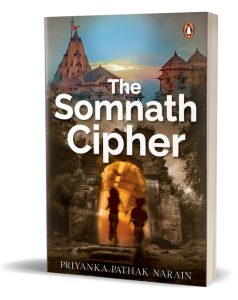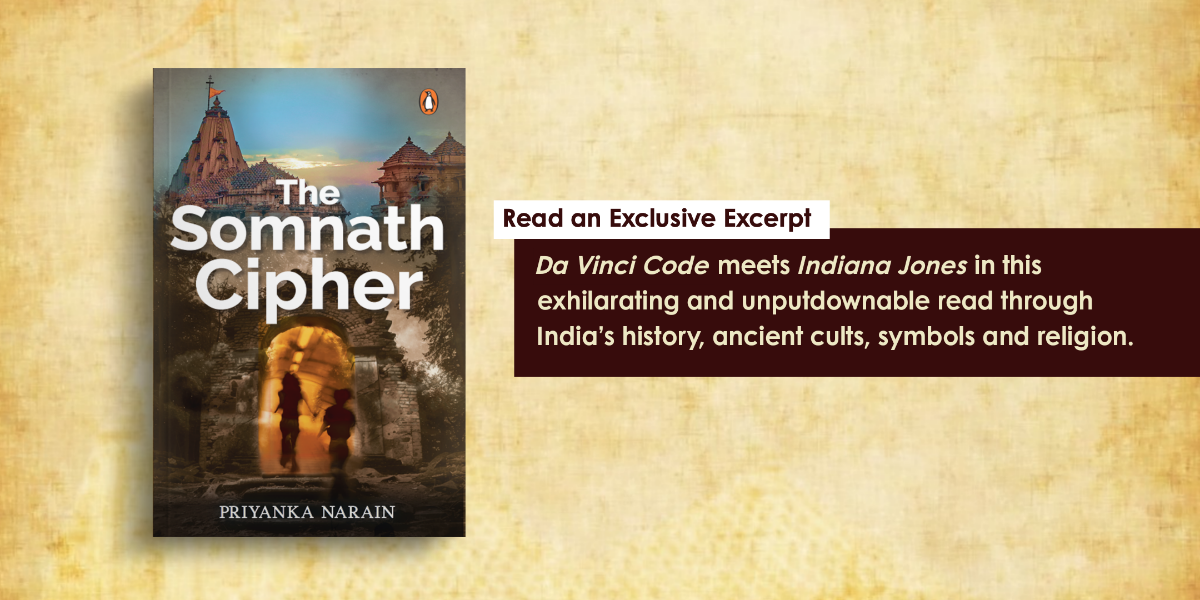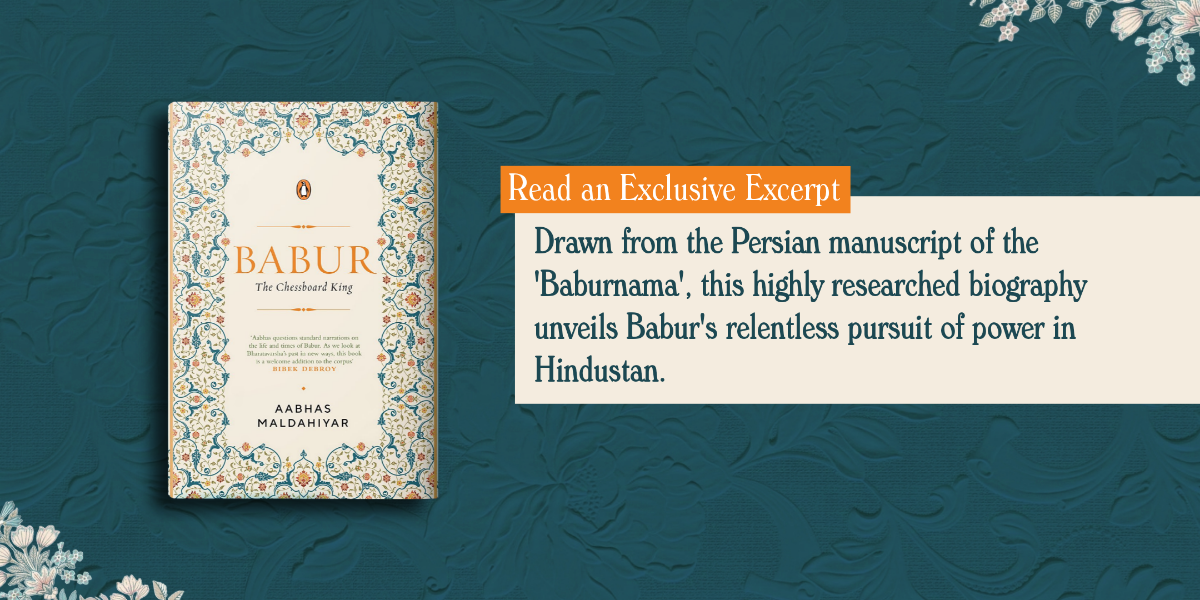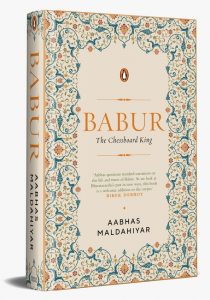Step into the heart-pounding adventure of The Somnath Cipher by Priyanka Pathak Narain, where journalist Pia Jani and her childhood friend Aditya Narayan are drawn into a high-stakes quest. As they race against time to decode ancient mysteries linked to the legendary Somnath Temple, they must stay ahead of a dangerous enemy who will do anything to keep the secret hidden.
Read this exclusive excerpt and experience the excitement of Da Vinci Code meets Indiana Jones first-hand!

***
31 December 2020, 8.40 a.m.
Somnath, India
Eighty-seven hours to go
Nila Shukla examined the eager faces of her art restoration students— all of them brandishing the Somnath tweet and short report written by Pia Jani last night.
How on earth had that girl got a hold of the story so fast?
‘Professor, what structure lies under there?’ one demanded. The premonition of danger that had settled in her since she saw the GPR investigation results on the computers was growing with each passing hour, taking a deeper hold.
‘Do you think it was this temple that Mahmud of Ghazni looted?’ asked another.
‘Will you be involved with the ASI dig?’ shouted someone in the back.
‘What do you think is there under Site-4?’ yelled another. ‘What does targeted objects mean?’
Nila winced. Site-4 again. The presence of non-linear, localized, targeted objects.
What had Ved been thinking, trying to obfuscate his report with such inanity? For those who knew anything, such an attempt would only draw attention. Still, it was done. And the time to avoid attention was over. The spotlight was on it and now everything depended on what she chose to do.
For the first time in her life, it had come down to action. What she chose to do.
Raising her palm overhead, Nila smiled, as though delighted by their interest in the find. ‘Tell me, can any of you tell me the exact number of times this Somnath temple has been razed in the hopes of finding its treasure?’
‘Seven!’
‘More! Ghazni alone raided it seventeen times!’
Six!’
‘Four!’
The class was laughing along with her.
‘All wrong! Ghazni raided India seventeen times—not Somnath. That’s a misconception. Let’s count and get our history right. There are three temples of antiquity at Somnath mentioned in texts: a golden temple built by Somraj in Satyug, which is the first Age of the World, the silver one made by Ravana in the Second Age of the World called Tretayug, and the sandalwood one made by Krishna during Third Age of the World—the Dwaparyug.
‘Then we come to the fourth and last age of Kalyug. In the last 2000 years, we have had six recorded reconstructions of this temple. The first of these was when the Pashupati cult was headquartered in Somnath at the beginning of the Christian era. Six hundred years later, Raja Maitre rebuilt the crumbling temple. Then came the Islamic invasions into the Deccan when Governor Al-Junayd attacked it. Nag Bhat II reconstructed it using red stone not much later than AD 800. This was the third reconstruction of the Christian era and also the building that would face the fateful attack of Ghazni, the ferocious Islamic plunderer.
‘On 6 January 1026, Mahmud of Ghazni arrived in Prabhas region and pillaged the Somnath shrine. Fifty thousand men—armies gathered from many small kingdoms—died defending it.’
‘Did he loot the treasure?’
‘Yes. He had already looted Mathura before this in AD 1018. He knew all about the fabulous wealth of the temples,’ replied Nila.
‘He had attacked Mathura?’
‘Yes. One of his seventeen attacks on India. During that raid, Mahmud wrote of the Vasudeva temple that “If anyone wished to construct a building like this, it would take 200 years with the most experienced and able workmen and cost hundred thousand thousand red dinars.”
‘And how much is that in modern times?’
‘Thirty billion dollars,’ replied Nila to gasps and a sudden hush. In the silence, she continued speaking softly.
‘Mahmud grudgingly admired the Vasudeva temple and then ordered the temple to be burnt with naphtha and fire—levelled to the ground. The work of an estimated two centuries was reduced to smoke and ashes.
No one spoke for a long while. Finally, a young woman in the back asked softly. ‘Is it true that he broke the Somnath idol too?’
‘Yes. Four pieces,’ she said.
‘It is true he took the pieces to Ghazni?’
‘Yes.’
‘He put the pieces of the idol on the steps leading to the mosque?’
‘Yes. One on the doorway to the mosque, one on the doorway to his palace and two were sent to Mecca and Medina.’
Gasps in the back of the classroom. ‘What a savage!’
‘He’s been called that and many other things for those actions,’ said Nila.
‘Is it true he was cursed for it?’ asked a thoughtful student in the front. Nila, who had a long memory for faces, struggled to remember names belonging to those faces.
‘Well, after the sacking of Somnath, he reached the Gujarat– Rajasthan border. There, he was told that two kings, Govindaraja Chauhan and Raja Parmar Bhoja, were moving to intercept him. The alliance of these two kings had once defeated him in an earlier invasion, so Ghazni was eager to avoid them.’
‘Did he?’
‘Did he what?’
‘Succeed in avoiding them?’
‘Yes. Yes, he did. He marched home through the Thar desert—a march that nearly killed him and wiped out most of his army.’
‘That’s good to know,’ chimed one.
***
Get your copy of The Somnath Cipher by Priyanka Pathak Narain on Amazon or wherever books are sold.

















